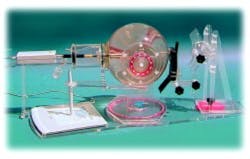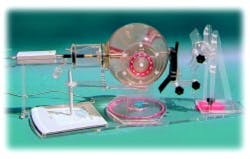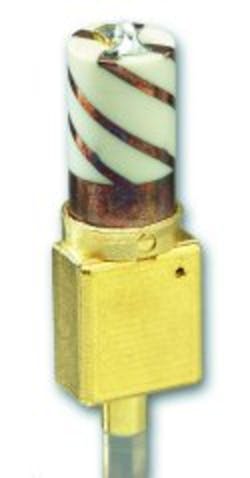It’s a brave person who expresses strong pro-cell-phone sentiments these days. Anecdotal stories abound that relate microwave radiation from cell phones and base stations to a variety of illnesses and anomalies. However, in spite of the growing body of research and unsuccessful litigation alleging a causal link between phones and cancer, there is no clear evidence that cell phones cause cancer or that they do not.
A scientific review by the World Health Organization (WHO), held under the International Electromagnetic Fields (EMF) Project, concluded that “from the current scientific literature, there is no convincing evidence that exposure to RF shortens the life span of humans, [nor that it] induces or promotes cancer. However, the same review also stressed that further studies are needed to draw a more complete picture of health risks, especially about possible cancer risk from exposure to low levels of RF radiation.”1
Terminology
Colloquially, we talk about cell phones, mobile phones, portable phones, or simply mobiles. The FCC, however, much more stringently defines terminology when part of a safety standard. Mobile phones basically are radio sets that have a relatively large separation between the apparatus close to an operator and the remotely located antenna. Portable phones are the very small analog or digital devices you hold close to your head to use. Because of the proximity of the antenna to a user’s head, there is widespread concern about safe RF exposure levels and their measurement.
In the United States, the term cell phone generally is synonymous with portable phone, in the FCC sense, and refers to communications in the 800/900-MHz or 1,800/1,900-MHz bands, regardless of the modulation scheme. Usually, people don’t distinguish between cell phone (or cellular phone) and the more exact personal communications service (PCS) description that applies to only the 1,800/1,900-MHz band.
A cell-phone system partitions a geographical area into cells or areas covered by a separate base station. However, local terminology does vary and can be confusing. In the United Kingdom, for example, the small, portable phones usually are called mobile phones or mobiles. So, you need to be sure you understand what device is being referenced when reviewing information about cell phones.
The other kind of portable phone is a cordless phone. It communicates with a small unit connected to a conventional plain old telephone system (POTS) phone in your home and has very limited range and low power. These devices are not causing anything like the health concern attached to the proliferation and use of cell phones.
Safety Limits and Their
Measurement Handsets
Limits for exposure to RF power are based on heating effect and expressed in two ways depending on proximity. For sources farther than 20 cm from the user, a far-field value termed maximum permissible exposure (MPE) uses a watts/square area power-density figure. For example, the present FCC/ANSI limit is 4 mW/cm2 in the 800/900-MHz cellular phone band.
Limits vary widely around the world, with the lowest being 1,000 times smaller than the FCC/ANSI value. Also, many nations couple safety limits to the duration of the exposure.
The area of the MPE from 1 GHz to 10 GHz shows the difference in treatment given by the IEEE and the International Commission on Non-Ionizing Radiation Protection (ICNIRP). The IEEE and the FCC/ANSI standards have adopted a limit that increases from 0.2 mW/cm2 below 200 MHz to 10 mW/cm2 at 10 GHz and above. The ICNIRP starts at the same low-frequency value but has chosen to limit exposure to 1 mW/cm2 at 1.5 GHz and above.
For transmitter-to-user separations under 20 cm, a near-field limit is expressed in watts/unit of mass. This is the specific absorption rate (SAR) value. For example, the FCC/ANSI peak spatial SAR limit of 1.6 W/kg applies to partial-body exposure averaged over a 1-gm mass of tissue in the shape of a cube. A separate limit of 4 W/kg relates to hands, feet, wrists, and ankles and a much lower 0.2 W/kg value to eyes.
The 1.6-W/kg limit applies to the cranial region involved in cell-phone testing. A detailed discussion of SAR test methodology is given in “Evaluating Cell-Phone Safety,” EE-Evaluation Engineering, May 2001.
As an example of the variation among SAR standards, in the United Kingdom, the limit set by the National Radiological Protection Board (NRPB) is 10 W/kg. However, the ICNIRP has established a limit of 2 W/kg on the assumption that some members of the general public might be particularly sensitive to RF radiation.
The CarPhone Warehouse, a U.K. retailer of cellular and PCS phones, is actively involved in the debate over microwave radiation from phones. It provides timely and independent reviews of relevant research and government policy.
The company recently republished the results of tests performed by members of the mobile manufacturers forum (MMF) under a new international harmonized SAR testing method. The MMF represents the major cell phone companies and includes Alcatel, Mitsubishi Electric, Motorola, Nokia, Panasonic, Philips, Sagem, Siemens, and SonyEricsson. Selected results demonstrating the range of values are shown in Table 1 (see below).
Table 1. Comparison of Measured Cell-Phone SAR Values
(Courtesy of The CarPhone Warehouse)
| Mobile Phone Handset | Reported SAR Value (W/kg) |
| Alcatel One Touch 511 Series Alcatel One Touch 311 Series Alcatel One Touch 300 Series Trium Mondo Trium Odyssey Trium Mars Motorola V60g Motorola Timeport 250 Motorola V3688 Nokia 9210 Nokia 5510 Nokia 8210 Panasonic GD75 Panasonic GD93 Panasonic GD35 Siemens S40 Siemens S35i |
0.30 |
All of the test results shown in Table 1 fall comfortably within either the 1.6-W/kg FCC/ANSI limit or the 2-W/kg ICNIRP value. Output power is at or near 0.7 W for most phones, and manufacturers are steadily reducing it to increase battery life. It is interesting, however, that there is almost a 4:1 SAR variation among the phones tested.
Base Stations
The phone handset is only half of the microwave radiation-health issue. Equally important is the forest of base stations required to support seamless roaming in large or densely populated geographies.
Ranging in height from 50 to 200 ft, most base-station towers support three groups of three antennas. One antenna in each group transmits, and the other two receive. A transmitting antenna can be connected to as many as 21 transmitters or channels for a total of 63 channels per site. Radiated power per channel varies from 1 to 10 W depending on the particular cell’s location and level of use, such as urban vs. countryside.
Total radiated power typically is in the 100-W to 300-W area because channels don’t transmit continuously. The effect on the general public is intended to be very small because power density falls off as the square of the distance from the transmitter. Consequently, the only people thought seriously to be at risk are maintenance personnel who access the secure area surrounding a base station.
The FCC limit for 800/900-MHz cellular-phone base-station radiation is 0.58 mW/cm2 averaged over a 30-min period. Because of the antenna radiation pattern and the square-law decrease in power density, measurements at ground level near a base station typically are 0.001 mW/cm2 or less.
An FCC document stated that, “…to be exposed to levels near the FCC’s limits for cellular frequencies, an individual would essentially have to remain in the main transmitting beam, at the height of the antenna, and within a few feet of the antenna. This makes it extremely unlikely that a member of the general public could be exposed to RF levels in excess of these guidelines.”2
So, What Is the Problem?
Actually, there are many. Widely deployed technology that cannot be proven completely safe leads to public unease. The lack of clear evidence to support or debunk assertions of links to cancer, for example, gives anti-cell-phone groups greater influence. A simple Internet search will turn up numerous websites, all related in some way to cell-phone safety, with agendas ranging from local protest over an antenna site to mind control using directed microwave weapons. Conspiracy theories are rife.
An unbiased review of the relevance of past research appears in the CarPhone Warehouse booklet mobile phones and health. A proposal for comprehensive new research is presented in the WHO Fact Sheet No. 193 Electromagnetic Fields and Public Health. WHO has established the EMF Project and identified specific studies to address the issue of localized exposure. A large epidemiology study also has been organized in more than 10 countries by the International Agency for Research on Cancer (IARC), a specialized cancer research agency of WHO, to determine if there are links between the use of cell phones and head and neck cancers.
What Can Be Done Now?
Considering that it will be several years before we can expect the health issues to be resolved, one approach would be to quickly adopt technology that reduces the level of radiation directed toward the cell-phone user. A low-SAR antenna developed in the United Kingdom provides that opportunity.
These elements combine to produce an optimized structure with regard to SAR because most of the energy of the near field concentrates in the dielectric core. Very little energy is available near the cell-phone user’s head, so the SAR associated with this antenna is reduced.
A well-contained near field is particularly important in Sarantel’s portfolio of antenna products that addresses markets such as global positioning system (GPS) equipment because it supports high-performance hand-held units. Other antenna solutions are more affected by the proximity of the user’s hand and nearby metallic objects.
To date, about 120 patents associated with this antenna have been applied for or granted, a quantity that indicates the unique attributes of the technology. The major area of continuing research is directed at broadening the antenna’s bandwidth.
Presently, the device works best with narrow bandwidth systems such as the global system for mobile communications (GSM) and claims to have communications characteristics equivalent to a conventional antenna while providing an extremely low SAR value. More work is required before similar performance can be achieved in a code division multiple access (CDMA) system, for example.3
References
- Fact Sheet N183, Electromagnetic Fields and Public Health, World Health Organization, Munich, Germany, November 1996. www.who.int/inf-fs/en/fact183.html
- Information on Human Exposure to Radiofrequency Fields From Cellular and PCS Radio Transmitters, FCC Office of Engineering and Technology, Washington, D.C., January 1998.
- Leisten, O., and Rosenberger, B., Miniature Dielectric-Loaded Personal Telephone Antennas With Low SAR, The Centre for Mobile Communications Research, Loughborough University, July 1999. 01144 1509 227090, www.lboro.ac.uk/departments/el/research; also, Sarantel Ltd., 01144 1933 670560.
Return to EE Home Page
Published by EE-Evaluation Engineering
All contents © 2003 Nelson Publishing Inc.
No reprint, distribution, or reuse in any medium is permitted
without the express written consent of the publisher.
February 2003


